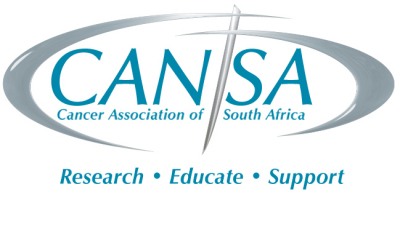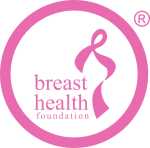
The chemotherapy drugs cannot distinguish between cancer cells and normal cells of the body and will attack other rapidly growing cells such as hair,skin, nails, lining of the digestive system and bone marrow (blood cell lines).
Therefore there are various side effects associated with the therapy and because each drug acts in a slightly different way, the side effects will also differ between different drugs.
Thankfully, like all drugs (including Panado and Aspirin), not every side effect is experienced by every person, and some side effects are experienced to lesser degrees in some people.
Many side effects may be unpleasant, but are not harmful. Some side effects may get worse and some may get better with each cycle of treatment. Others may develop during the course of the treatment.
Some side effects need to be treated and some can be managed by anticipating them and controlling them in advance which lessens their effect.
Some side effects are more serious and it is important to contact your doctor if you are worried.
The good news is that cancer cells divide more rapidly than normal cells and are therefore more likely to be killed by chemotherapy.
More good news is that normal cells are also more able to recover than cancer cells and therefore most side effects are not permanent and will reverse once the treatment is finished.
Blood cell counts are done each time a new cycle of chemotherapy is started. This is usually done the day before the next treatment or very early on the same morning of the treatment. Sometimes a blood test will be done mid-cycle depending on the patient or the combination of drugs used.
The most common side effects and some of the agents that cause them:
Nausea/Vomiting (FEC, AC> CMF, Xeloda)
Drugs that help prevent against nausea are given before the combinations that cause this. Medication is also given to take home for a few days after treatment too. Different drugs work for different people and it may be necessary to try more than one antiemetic before you get relief. It is important not to give up – if the prescribed antiemetic is not effective, work with your doctor and nurse to find the one that works best for you.
Diarrhoea/ Constipation (all, but especially Xeloda, Vinorelbine)
The irritation of the lining of the bowel may lead to diarrhoea. This can often be managed with dietry changes but may require medication. Drinking lots of fluids is important to help replace losses.
Chemotherapy may cause some people to become constipated. Others may become constipated because they are less active than before, because of diet changes, or from pain medication they may be taking.
Mouth sores and ulcers (all)
The cells lining the mouth may be affected and the mouth may be sensitive or develop small ulcers. Sometimes changes or loss of taste can occur which recovers once treatment is completed.
Lower blood cell counts (FEC,AC, CMF, Gemcitabine,Vinorelbine,)
This occurs because the chemotherapy drugs affect the bone marrow. The bone marrow makes white blood cells, red blood cells and platelets. The levels of these blood cell counts are checked regularly during treatment.
Low white cell counts (FEC, AC, CMF)– white blood cells help fight infection. If you have a severe infection and your white cell count is very low, it could be life threatening and may require hospitilisation. It is important to contact your treating doctor if your temperature goes above 38degC.
Low red cell counts (FEC,AC, CMF,Taxol, Gemcitabine)– red blood cells carry oxygen to the cells. If the count goes down you may become anaemic which will result in you feeling tired and breathless. If severe, you may need a blood transfusion.
Low platelets (Gemcitabine)– platelets help blood to clot. If the count goes down you may bruise easily.
Tiredness/Fatigue (all)
Fatigue is a common side-effect of chemotherapy and can range from mild lethargy to feeling completely wiped out. It is not always due to a low red cell count (anaemia). It can be a deep tiredness that does not get better from sleep and tends to be worse at the beginning and end of a treatment cycle but may persist for 6 months to a year after treatment.
Hair loss (FEC,AC) Hair thinning (CMF,Taxol, Vinorelbine)
Some chemotherapy combinations (such as AC, FEC, CAF) make all hair fall out both on the head and the rest of the body.
Other combinations cause some hair to fall out so the hair thins out.
This can be upsetting but it is temporary- the hair will begin to grow back a few weeks after treatment has stopped. It may grow back different in colour or texture though.
Skin and nail changes (Taxol, Xeloda, Vinorelbine)
Skin may become dry and sensitive to sunlight and some drugs even cause rashes. Nails may also become brittle or discoloured.
Hand-foot Syndrome (Xeloda)
The earliest symptoms of Hand-foot Syndrome is a painful sensitivity of the hands and feet. It may progress from sensitivity to redness and swelling on the palms of the hands and soles of the feet. The redness looks like sunburn and it may blister and in severe cases form sores. The affected skin can also become dry and peel. It is important to advise your doctor or nurse about any Hand-foot Syndrome symptoms, even if they are mild, as treating early can help prevent severe cases.
Eye problems (all)
Sore eyes, “gritty” eyes, watery eyes, infection in eyes(conjunctivitis), and blurred vision may occur in some people to varying degrees during their treatment.
Phlebitis (FEC, AC, CMF, Vinorelbine,)
Damage to the lining of the veins used in some chemotherapies can result in discomfort or burning sensation in the veins. This may last for some weeks. If venous access is difficult a port (a cannula inserted under a general anaesthetic)into a large vein in the chest) may be advised. If the vein is burning or painful during chemotherapy, please alert the chemotherapy sister.
Peripheral neuropathy (Taxol, Vinorelbine)
This is experienced as a numbness or tingling sensation in fingers or toes. In more severe cases it may be painful. It is most commonly seen in diabetics and in those who have had multiple courses as it tends to be cumulative. It may persist for a few months after completing treatment.
Allergic reactions (Taxol)
If this occurs, it usually happens with the first dose. If it occurs it will happen in the chemo room and not later at home. It is usually prevented by and easily treated with antihistamines and steroids.
Liver changes (Gemcitabine, Vinorelbine,Xeloda)
In many cases this is only noticed on the blood tests and goes unnoticed by the patient. It will go back to normal after treatment. In the cases of breast cancer that has already spread to the liver, the liver function may be affected by the cancer itself and may actually improve on chemotherapy.
Menstrual irregularity and infertility (all)
When women receive chemotherapy it can damage the ovaries and reduce the amount of hormones they produce, resulting in short-or long-term infertility (inability to fall pregnant). The effects of ‘chemo’ on your hormones may result in:
♦ Menstrual periods becoming irregular or stopping completely
♦ Menopause-like symptoms, e.g. hot flushes and itching burning, or dryness
of vaginal tissues
♦ Vaginal infections are more likely
Menstrual function can start again up to 2 years after chemotherapy. The onset of menopause may also be brought earlier and fertility may be impaired. If a woman may want a baby after chemotherapy, it is a good idea to discuss this with the doctor before starting chemotherapy.
Remember that, chemotherapy is not a safe method of contraception and a safe contraceptive is very important during chemotherapy as the drugs would be extremely harmful to the foetus.
Cardiac failure (FEC, AC, CAF, Xeloda)
In very rare instances some chemotherapy can lead to heart failure. If your doctor thinks you are at risk a cardiac function test will be done before starting chemotherapy.
There are many other possible side effects of chemotherapy, many of which are extremely rare or mild and therefore not covered here but can be discussed individually with your doctor if you have concerns.
Frequently asked Questions:
“So just how bad am I going to feel?”
This is impossible to predict. Everybody is different. Many people can continue working during chemo, but may find they need to take a day or 2 off after chemo before going back to work. Remember your experience will be different from the lady sitting next to you in the chemo room, so don’t panic if you find you are having a harder time than she (or an easier time!). Tell your doctor. Often something can be done to make the next time better. Some things you may have to grin and bear.
“What about other medicines, drugs and supplements during chemotherapy?”
It is important to discuss this with your specialist any other drugs your are taking or additional drugs you would like to take. This includes vitamins or dietary supplements, vaccines or immunizations, immune boosters and herbal medicines. They may interfere with the effectivity of your chemotherapy treatment. Whatever boosts you may boost your cancer cells too!!
Blog written by Ronelle Lovric http://www.capebreastcare.org
 Through its Type A programme, offering funding to established researchers at South African universities and research institutions, CANSA is currently funding a number of projects addressing breast cancer.
Through its Type A programme, offering funding to established researchers at South African universities and research institutions, CANSA is currently funding a number of projects addressing breast cancer.
 Buddies For Life is a bi-monthly lifestyle magazine, published by Word for Word Media in association with the Breast Health Foundation, for breast cancer patients, their families and friends. It was launched in June 2011, and 22 issues have been published to date with many more to come.
Buddies For Life is a bi-monthly lifestyle magazine, published by Word for Word Media in association with the Breast Health Foundation, for breast cancer patients, their families and friends. It was launched in June 2011, and 22 issues have been published to date with many more to come. mammography units, radiology centres and support groups. Medipost courier the distribution of the print magazines to all the various distribution points.
mammography units, radiology centres and support groups. Medipost courier the distribution of the print magazines to all the various distribution points.
 It is hard to imagine feeling hot and bothered in our chilly winter weather, but cancer treatment can play havoc with our normal body temperature.
It is hard to imagine feeling hot and bothered in our chilly winter weather, but cancer treatment can play havoc with our normal body temperature.







